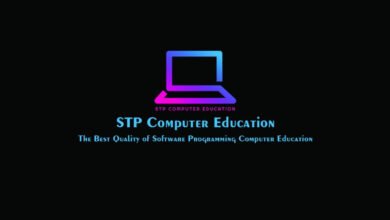Top 10 Strategies for Effective Online Learning: A Guide for Students and Educators

Online learning has grown tremendously in recent years, with more students, professionals, and institutions embracing digital platforms for both formal education and personal development. Online learning offers flexibility, convenience, and often a personalized approach to education, making it an attractive option for many.
However, to succeed in an online learning environment, students and educators need to adapt to different challenges and apply specific strategies to maximize effectiveness. Here, we present the top 10 strategies for effective online learning, valuable for both students aiming to optimize their learning experience and educators striving to improve their teaching impact.
1. Set Clear Goals and Expectations
One of the first steps to success in online learning is setting clear goals and expectations. Knowing what you want to achieve can help you stay motivated and on track throughout your course.
- Students: Define specific academic and personal goals before beginning your online course. This might include mastering a particular skill, achieving a certain grade, or completing assignments on time. Setting daily, weekly, and monthly milestones can help keep you on track.
- Educators: Clear goals help students understand course objectives and what’s expected of them. Outline grading policies, due dates, and course objectives at the start of the course, and reiterate these periodically to maintain clarity.
2. Establish a Consistent Study Routine
Consistency is key to productivity, especially in online learning environments where distractions are plentiful. Creating and sticking to a schedule allows for better time management and focus.
- Students: Designate specific times each day or week for studying. Try to create a quiet study space free of interruptions. Consider using digital calendars or apps like Google Calendar to set reminders and keep track of due dates.
- Educators: Encourage students to follow a routine by providing a weekly schedule that includes deadlines, live sessions, and recommended study hours. Reinforce the importance of time management by integrating time management exercises or tools into the course.
3. Leverage Technology Tools
Online learning offers a wealth of digital tools that can enhance learning experiences. From note-taking apps to virtual whiteboards, the right tools can make learning more effective and engaging.
- Students: Utilize apps like Notion, Evernote, or Microsoft OneNote for organizing notes, managing assignments, and keeping track of your progress. Collaborative tools like Google Docs and Slack can help you engage with peers during group assignments.
- Educators: Introduce various tools that align with course content, such as Kahoot for quizzes, Padlet for interactive discussions, or Miro for visual brainstorming. Incorporating diverse tools keeps lessons dynamic and helps cater to different learning styles.
4. Participate Actively in Class Discussions
Active participation in online classes is crucial for deepening understanding and fostering a sense of community. Discussions offer insights and different perspectives, enhancing the learning experience.
- Students: Engage with classmates and instructors in discussion boards, group chats, and live sessions. Ask questions, share insights, and respond thoughtfully to others’ posts to reinforce your learning and gain feedback.
- Educators: Facilitate discussions by posing open-ended questions, encouraging students to think critically. Try grouping students for peer-to-peer discussions or projects to encourage collaborative learning and diverse perspectives.
5. Develop Self-Discipline and Motivation
Self-discipline is a vital skill in online learning, where the lack of a physical classroom can lead to distractions. Motivation keeps students engaged, while self-discipline ensures they stay on track.
- Students: Set up incentives or small rewards for completing tasks, such as taking a short break or enjoying a snack after focused study sessions. Avoid multitasking and limit social media during study hours to stay focused.
- Educators: Help students build self-discipline by implementing regular quizzes, weekly assignments, or reflection activities that encourage accountability. Consider sharing productivity and motivational tips to inspire students throughout the course.
6. Optimize Your Learning Environment
A conducive learning environment is essential for concentration and comfort. A dedicated, well-organized study space can enhance focus and reduce distractions.
- Students: Choose a quiet, well-lit space that’s free from distractions. Personalize your setup with comfortable furniture and necessary supplies within arm’s reach. Noise-canceling headphones can help block out background noise.
- Educators: Provide guidance on setting up an effective learning environment and encourage students to share their setups as a bonding activity. Remind students of the importance of a well-structured workspace for maintaining focus and efficiency.
7. Practice Active Learning Techniques
Active learning involves engaging with the material actively rather than passively. Techniques like summarizing, questioning, and applying concepts to real-life scenarios can boost retention and comprehension.
- Students: Use techniques such as summarizing lessons in your own words, creating flashcards, or teaching the material to someone else. Applying concepts through case studies or projects also strengthens understanding.
- Educators: Design activities that require students to apply what they learn. Incorporate problem-solving exercises, case studies, or role-playing scenarios to encourage active learning and critical thinking.
8. Seek Feedback Regularly
Feedback is invaluable for growth and improvement. Constructive feedback helps students recognize areas for improvement, while positive feedback reinforces strengths.
- Students: Don’t hesitate to ask for feedback from instructors and peers on assignments, exams, and participation. Use feedback to identify weaknesses and develop strategies to address them.
- Educators: Provide timely, constructive feedback that guides students toward improvement. Use rubrics and clear grading criteria so students understand how their performance is assessed and can improve accordingly.
9. Stay Organized with Course Materials
Organizing your materials helps you stay efficient and reduces stress. With multiple assignments and resources, an effective organization system is crucial.
- Students: Store your notes, assignments, and reference materials in designated folders. Use digital tools like Dropbox or Google Drive to organize files by topic or week for easy access.
- Educators: Provide structured resources, such as a course syllabus, weekly summaries, and clear folder structures. Creating a centralized location for materials helps students locate and utilize resources efficiently.
10. Practice Digital Well-being
Increased screen time is inevitable in online learning, but balancing digital exposure with self-care is essential for mental and physical health.
- Students: Take regular breaks to prevent burnout, following the 20-20-20 rule: every 20 minutes, look away from the screen for 20 seconds at something 20 feet away. Include physical activity and outdoor time in your routine to recharge.
- Educators: Encourage digital well-being by incorporating breaks into live sessions and reminding students to step away from screens periodically. Share tips on managing screen time and practicing self-care to foster a balanced learning experience.
Frequently Asked Questions (FAQs) About Online Learning
1. What are the main challenges of online learning?
The main challenges include lack of face-to-face interaction, potential distractions, time management issues, and technology-related problems like poor internet connectivity. Online learning also requires a high level of self-discipline and motivation, which can be difficult for some students.
2. How can I stay motivated in online courses?
To stay motivated, set specific goals, create a routine, reward yourself for small accomplishments, and engage actively in discussions and group activities. Maintaining a positive mindset and connecting with peers can also help keep you engaged.
3. What are some essential tools for online learning?
Essential tools include video conferencing platforms (Zoom, Microsoft Teams), digital note-taking apps (Notion, OneNote), collaborative tools (Google Docs, Slack), and project management apps (Trello, Asana). These tools help organize, communicate, and collaborate effectively in an online environment.
4. How can educators create an engaging online learning experience?
Educators can make online learning engaging by incorporating interactive tools, fostering active discussions, providing real-world examples, and personalizing feedback. Using multimedia, such as videos, animations, and visual aids, can also enhance students’ interest and understanding.
5. What are the benefits of online learning?
Online learning offers flexibility, accessibility, and often a wider range of courses. It allows students to learn at their own pace and provides access to digital resources that can be revisited at any time. Additionally, it enables people to balance work, family, and education more easily.
6. How can I manage my time effectively in an online course?
Managing time effectively involves setting a consistent study schedule, prioritizing tasks, using time-management tools like digital calendars, and breaking down assignments into manageable steps. Avoiding multitasking and staying organized with your materials also help maintain productivity.
7. Is online learning as effective as in-person learning?
While online learning may lack certain face-to-face interaction benefits, it can be just as effective, especially with well-structured courses and active student participation. Online learning’s flexibility, use of multimedia, and diverse assessment methods can even offer advantages over traditional in-person classes.
8. How can I reduce screen time during online learning?
To reduce screen time, take regular breaks, follow the 20-20-20 rule, and alternate between digital and non-digital study materials when possible. Physical activity, outdoor time, and mindfulness practices can also help balance screen exposure.
Conclusion
Online learning is a powerful mode of education, offering flexibility and accessibility to learners worldwide. However, it requires intentional strategies and habits to be effective. By setting goals, maintaining a routine, engaging actively, leveraging technology, and practicing self-discipline, students and educators can create an enriching and successful online learning experience. As digital learning continues to evolve, adapting these strategies can ensure that both students and educators thrive in this ever-expanding educational landscape.
Keep reading on GKGSinHindi.com.

